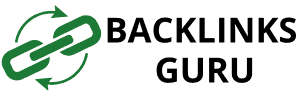📌 Introduction — Why This Topic Matters in SEO
Directory backlinks have always been one of the easiest ways to build links. For years, SEOs and business owners would submit their site to hundreds of free directories, collect quick backlinks, and boost rankings fast.
Then Google got smarter.
Today, backlink quality matters far more than backlink quantity. The Google Helpful Content Update amplified this shift — rewarding websites that help people, not ones trying to manipulate search engines.
So now everyone asks the same question:
👉 Are Directory Backlinks Safe or Dangerous?
👉 Could they still help rankings — or will they get your site penalized?
This in-depth guide — over 2000 words — will give you the exact truth and actionable direction for directory link building and beyond.
Let’s dive in. 🚀
1️⃣ What Exactly Are Directory Backlinks?
Before we decide whether Directory Backlinks Safe, we must first understand what they are.
A directory backlink is when a website is listed in a digital directory and that directory links back to your site.
Directory types:
| Directory Type | Example | Safety | SEO Strength |
|---|---|---|---|
| Local citations | Google Business Profile, Bing Places | ⭐⭐⭐⭐⭐ | Strong local SEO |
| Niche directories | Industry-specific portals (law, dental, fitness) | ⭐⭐⭐⭐ | High relevance |
| Business review sites | Yelp, Trustpilot | ⭐⭐⭐⭐ | Trust + traffic |
| Professional associations | Chamber of Commerce | ⭐⭐⭐⭐⭐ | High authority |
| General free directories | Old web link lists | ⭐⭐ | Weak, risky |
| Paid link-only sites | Link farms | ❌ | Unsafe |
📌 Key Insight:
Directory backlinks are not dead — spam directories are.
There is still real user value in discovering businesses through credible directories.
So when done right, Directory Backlinks Safe and beneficial.
2️⃣ Why Seos Used Directory Backlinks Historically
From 2000 to 2014, directories were a top link building tactic because:
✔ Easy submissions
✔ Fast indexing in Google
✔ Low-cost backlink acquisition
✔ Helped small/local businesses get visibility
Many SEOs abused them…
❌ Automated submissions
❌ Fake listings
❌ Thousands of spam directories
❌ Keyword-stuffed anchors
That abuse triggered Google crackdowns.
Today, Google reviews intent + relevance + user value for directory links.
That brings us to the update that changed everything…
3️⃣ What the Google Helpful Content Update Changed
HCU focuses on a simple principle:
Reward websites built for people — not search engines.
This means:
- Spammy directories = ignored or penalized links
- Relevant, quality directories = helpful signals
The update reinforced the importance of:
✔ E-E-A-T — Experience, Expertise, Authoritativeness, Trust
✔ Link authority + relevance
✔ Content usefulness and real human purpose
✔ Clean and natural backlink profiles
So post-update…
Directory Backlinks Safe ONLY when they help humans discover helpful content or businesses.
4️⃣ How Google Evaluates Directory Backlinks Today
Google uses many metrics to determine if a directory backlink is safe:
| Factor Google Checks | Good = SAFE | Bad = RISKY |
|---|---|---|
| Relevance | Right niche category | Random/unrelated niche |
| Human value | Helps customers find info | Exists only for backlinks |
| Quality control | Moderated listings | Auto-approved spam |
| Authority | High DA, real traffic | Low DA, dead site |
| Transparency | Marked paid links | Paid “dofollow” links |
| Content | Unique + detailed listings | Thin + duplicate content |
If a directory exists purely to manipulate SEO:
→ unsafe
→ may trigger a penalty
If a directory exists to help users find real businesses:
→ Directory Backlinks Safe
→ A trusted part of SEO
5️⃣ Benefits of Safe, High-Quality Directory Backlinks
When done properly, directory backlinks can still:
✔ Improve Local SEO rankings
✔ Boost trust and authority signals
✔ Increase referral traffic
✔ Help branded search discovery
✔ Strengthen NAP (Name/Address/Phone) consistency
✔ Support early indexing for new websites
They are especially powerful for:
🏪 Local businesses
⚖️ Lawyers
🦷 Dentists
👩🏫 Schools & coaches
🚛 Service providers
🏥 Healthcare providers
These industries rely on customer discovery, not just ranking.
If real customers use a directory — Google values it.
6️⃣ Risks of Low-Quality Directory Backlinks
Not all directories are safe.
Risky directories show warning signs like:
🚫 No real traffic
🚫 No moderation
🚫 Filled with spam industries
🚫 Keyword-stuffed listings
🚫 Link exchange offers
🚫 Paid “dofollow” links
🚫 Duplicate listings everywhere
🚫 Hidden networks of link farms
Using these repeatedly could result in:
⚠ Manual penalties
⚠ Domain trust loss
⚠ Anchor text spam signals
⚠ Rankings dropping site-wide
⚠ De-indexing in extreme cases
This is why Directory Backlinks Safe only when properly vetted.
7️⃣ How to Make Directory Backlinks Safe: Best Practices Checklist
Here is your Directory Backlink Safety Formula:
✔ Only choose directories with human purpose
✔ Evaluate DA/DR and real traffic
✔ Ensure business category relevancy
✔ Complete full and accurate business profile
✔ Use brand/name anchors over keyword stuffing
✔ Keep consistent NAP details across all listings
✔ Avoid mass submissions
✔ Track referral performance
✔ Remove or disavow spam listings
📌 Pro Tip:
A lean and high-quality directory footprint is more powerful than thousands of spam links.
Safe ratio guidance:
👉 Directory backlinks = 5–20% of your entire link strategy
👉 Editorial content + PR = remaining % for SEO growth
8️⃣ Local SEO & Directory Links: A Powerful Combo
Local SEO heavily depends on citations and directory validation.
These platforms prove to Google that:
⭐ Your business is real
⭐ People search for you locally
⭐ You operate at a physical location
⭐ Your business name + phone + address are widely recognized
Examples of top local directories:
- Google Business Profile
- Apple Maps
- Bing Places
- Yelp
- TripAdvisor
- YellowPages
- Angi
- Better Business Bureau
For local brands → Directory Backlinks Safe & essential
They help:
✔ Appear in Maps results
✔ Earn local trusted status
✔ Improve location-based keyword rankings
✔ Increase calls and foot traffic
This is where directory links shine brightest.
9️⃣ Directory Links vs Editorial Links: Which Is Better?
Here’s a simple comparison:
| Feature | Directory Backlinks | Editorial/Natural Backlinks |
|---|---|---|
| SEO Strength | ⭐⭐–⭐⭐⭐ | ⭐⭐⭐⭐–⭐⭐⭐⭐⭐ |
| Risk Level | Medium | Low |
| Relevance | Industry + Local | Topic-specific |
| Cost | Free–Low | Medium–High |
| Best For | Foundation building | Growth + Ranking power |
🏁 Conclusion:
Directories = foundation
Editorial links = rocket fuel 🚀
A winning SEO strategy uses both strategically.
🔟 Alternatives to Reduce Risk & Improve Rankings
If you want to build a safer strategy beyond directory links, consider:
- Guest posting on industry blogs
- Local sponsorships & press mentions
- HARO and journalist outreach
- Data-driven content that earns links naturally
- Partnerships with local vendors or charities
- Testimonials for tools/platforms
- Publishing original research or case studies
These methods build far more ranking power — while directory links support your credibility.
1️⃣1️⃣ How to Audit Your Current Directory Backlink Profile
If you’ve done directory link building before, check:
🟩 SAFE
- Real business info listed
- Strong niche match
- Good traffic directory
🟥 REMOVE / DISAVOW
- Domains full of casino/adult/pharma spam
- Non-niche irrelevant sectors
- Paid links without labels
- Dead or penalized directories
If any listing isn’t helping users → remove it.
Your backlink profile is only as strong as its weakest links.
🏁 Final Verdict: Are Directory Backlinks Safe?
✔ YES — When done properly
Directory Backlinks Safe if:
- They help users discover real businesses
- They come from trusted, relevant directories
- They represent a small part of a diverse strategy
- They follow link scheme policy guidelines
- They support Local SEO authenticity
❌ NO — If abused
Spammy directories = spam signals
Paid dofollow directory links = penalty risk
Bulk submissions = huge red flag
🎯 The Rule That Always Wins:
If the directory exists for real people, the backlink is safe.
If it exists for SEO manipulation only, the backlink is toxic.
Directory links are not the enemy — they are simply misunderstood.
🎉 Final Takeaway
Directory backlinks are like bricks:
🧱 One or two — strong foundation
🧱 Hundreds stacked incorrectly — collapse
Use them strategically, not lazily.
By applying the guidance in this 2000+ word guide, you can make sure Directory Backlinks Safe and highly effective for brand trust, local ranking power, and traffic growth.


